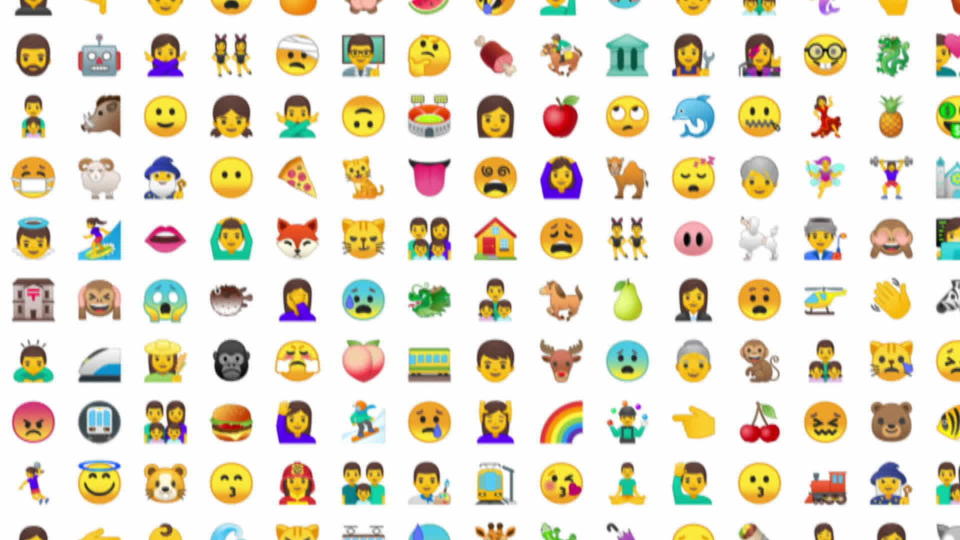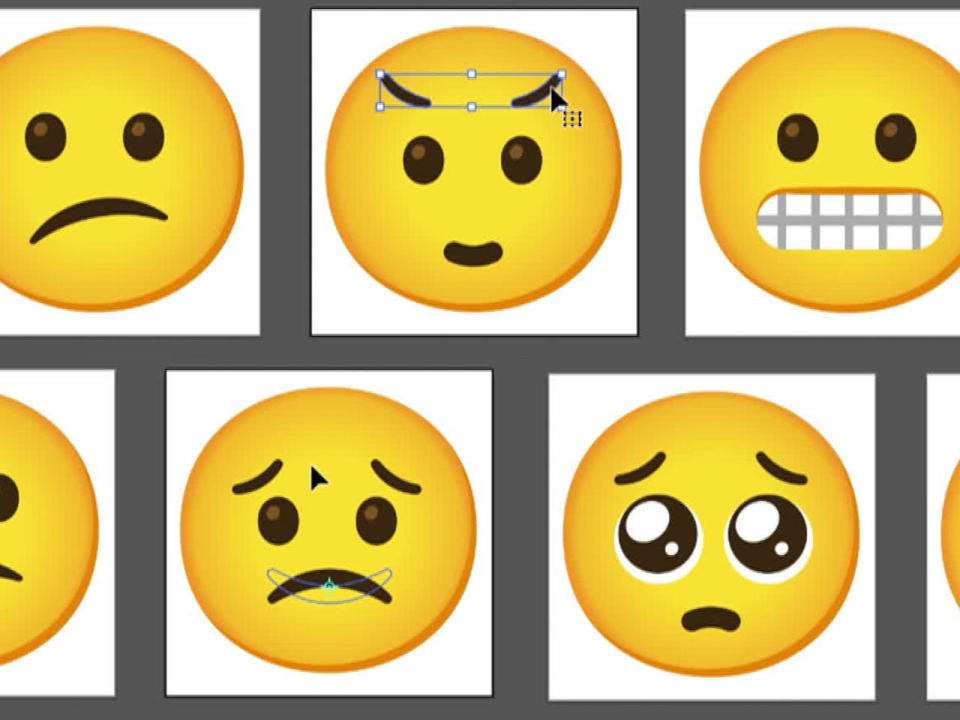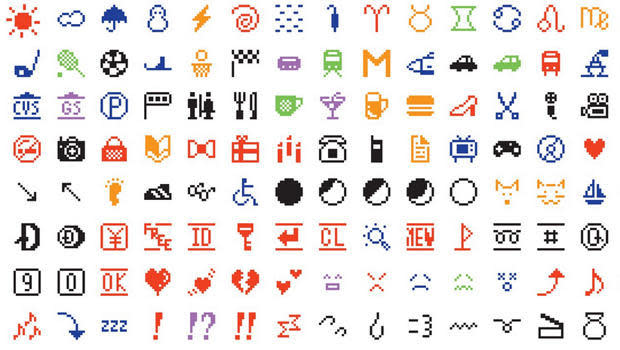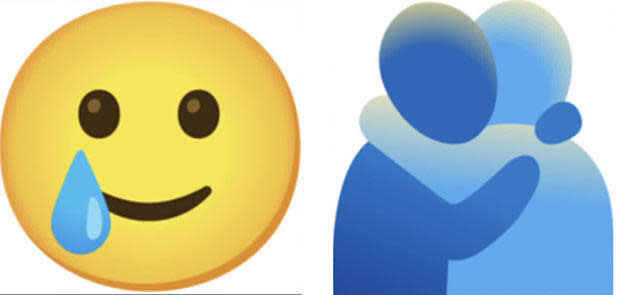Illustrating the power of emoji

Most of our communication online is typed – emails, text messages, Facebook and Twitter. But typing has no facial expressions, no tone of voice. No nuance.
So, maybe it was inevitable that somebody would invent emoji: tiny, typable pictures of faces, things, animals, flags and symbols.
These days, we type 10 billion emoji a day into our online communications.

Jennifer Daniel is the creative director of emoji at Google, in charge of all the emoji on every Google device, including Android phones. She and her team have drawn all 3,000 of Google's emoji. "I do dabble," Daniel said.
"By that calculation, that makes you one of the most-viewed artists alive," said correspondent David Pogue.
"Too much pressure!" she laughed.
Well, technically, Daniels draws Google's version of an emoji.

Each tech company has its own artistic style. When asked to characterize Google's style, Daniel said, "Well, we're cute. I would say cute and simple," she laughed. "Apple tends to be more realistic. Microsoft is flat, very flat, and they have this, like, big, black outline around them. Twitter's great. It's really simple, much more simple than Google's, actually."

But not as simple as the 176 original symbols that began on Japanese cellphones in 1999.

Emoji is a Japanese word, in fact, although it doesn't mean "emotion"; it means, approximately, "picture writing."
Mark Davis is the president of the nonprofit Unicode Consortium, a team of representatives from the big tech companies, like Apple, Google, Facebook and Amazon. He co-founded the group 30 years ago to eliminate a technical Tower of Babel problem: Symbols typed on one kind of computer showing up wrong when sent to another one.
In 2006, the Consortium became the keepers of emoji, too, and the sole judges of which new symbols to add each year. "What we decided to do is open up the process so that anybody could file a proposal," Davis said.
That's right: anyone can propose a new symbol. Now, the Consortium gets thousands of proposals, and it accepts only about 70 a year. So, keep a few rules in mind: "We exclude deities, we exclude logos," Davis said. To have your idea considered, he suggested, "Give us some information to justify that it's likely to be reasonably popular."
A good example of a citizen who had an idea that became an actual emoji is the hijab emoji.
Rayouf Alhumedhi was only 15 when she discovered that the existing emojis didn't include the hijab, the head covering worn by half a billion Muslim women around the world.
"I was texting among my friends," she told Pogue, "and we were creating a group chat name for one another with different emojis as how we looked like. And I couldn't find a hijab emoji. So, I went around it by adding a turban emoji and, you know, the normal girl emoji, with an arrow in-between [👳🏽♀️ 🔀 👩🏽], to somehow create a semblance of the hijab."
When writing her proposal for a hijab emoji, she said, "I spent around three to four days in my room, you know, curating the perfect proposal for the folks at Unicode Consortium, while my parents thought I was typing away a lab report or something!"
The Consortium accepted her proposal, and the hijab 🧕🏾 is now available on every smartphone and computer.
Pogue asked Daniel, "Is there such thing as pushback, controversy?"
"Oh, people hate emoji. Of course, they do. I mean, come on. Go on the internet. You know, everyone's angry about something!"
There was, for example, the Great Hamburger Scandal of 2017, in which it was discovered that Google had drawn the cheese under the meat. Or the Bagel Crisis of 2018, when Apple released a rough draft of a bagel untoasted and without cream cheese. "It was, like, no one had been to New York before. It was ridiculous!" Daniel laughed.
The companies quickly debugged those emoji 🍔 🥯, as they would any other software glitch.
"Gender-inclusive work, Daniel added, "has really ruffled some feathers."
The original human emoji were all yellow, like Simpsons cartoons. Starting in 2015, the Consortium added five skin tone options.

But even then, as late as 2015, the only worker options represented by women were princess 👸, bride 👰, dancer 💃, or bunny 👯.
Daniel said, "I noticed that it was reinforcing stereotypes. That's when I kicked off an initiative to fix it."
In 2016, the Consortium created male and female versions of every human emoji, and, more recently, gender-neutral versions.

But Mark Davis thinks there's a limit to how representative emojis can get. When Pogue asked, "Is there a grand plan for the future of emoji? I've heard it kicked around that someday, we'll be able to make ones that look just like us?"
"That's not gonna happen!" he laughed.
For her part, Jennifer Daniel herself created two new emoji in 2020: Smile with Tear, and People Hugging.

"There weren't two people hugging until 2020?" asked Pogue. "Not in your keyboard," she replied.
People Hugging wasn't a slam-dunk, however. There already was an emoji known as Hugging Face. "Oh, it's creepy emoji," Daniel said. "It is, like, this big old smile with these two little jazz hands."
"Oh, that's supposed to be hugging? I thought it was 'jazz hands'!" said Pogue.
"No one wants to say, like, 'I'm so sorry for your loss. 🤗' " That would be terrible!"
"I had no idea that was even supposed to be hugging."
"It isn't anymore!" Daniel laughed.
🌞
For more info:
Emoji designer Jennifer Daniel on TwitterMark Davis, president, Unicode Consortiumemojipedia.orggetemoji.com
Story produced by John Goodwin. Editor: Ben McCormick.

